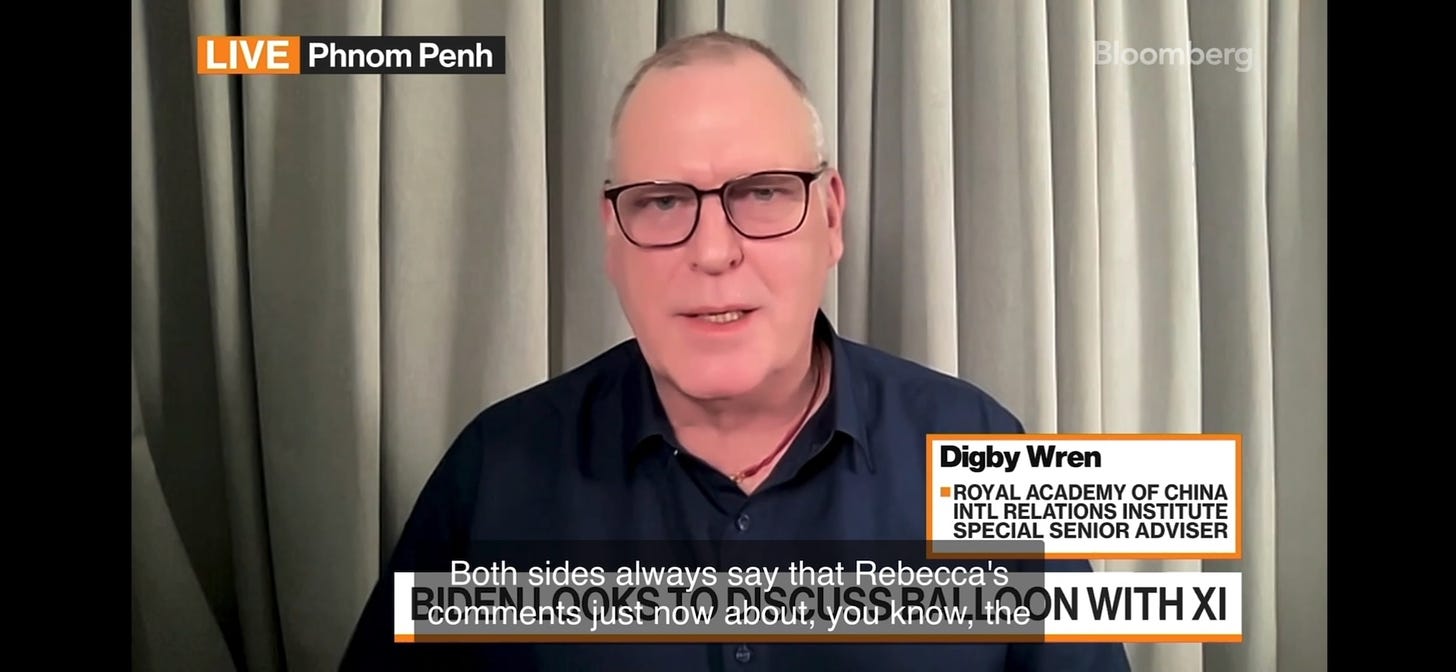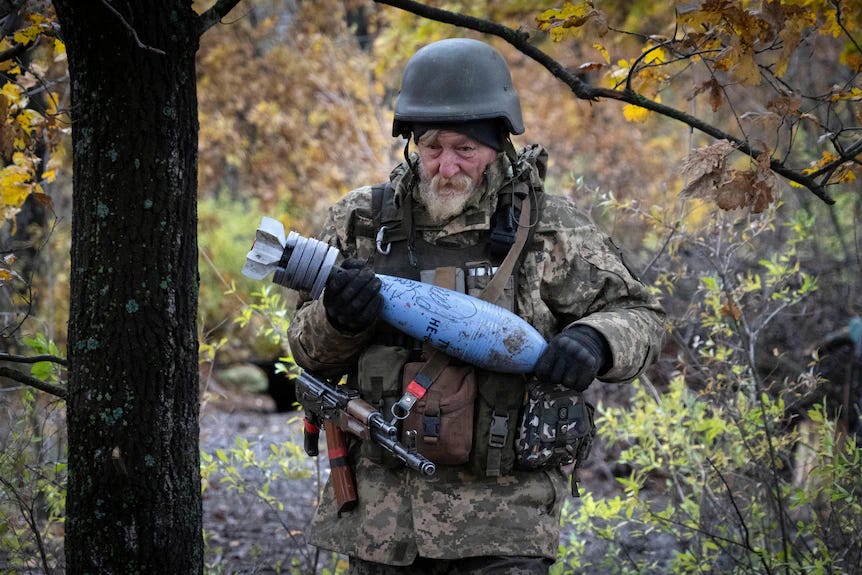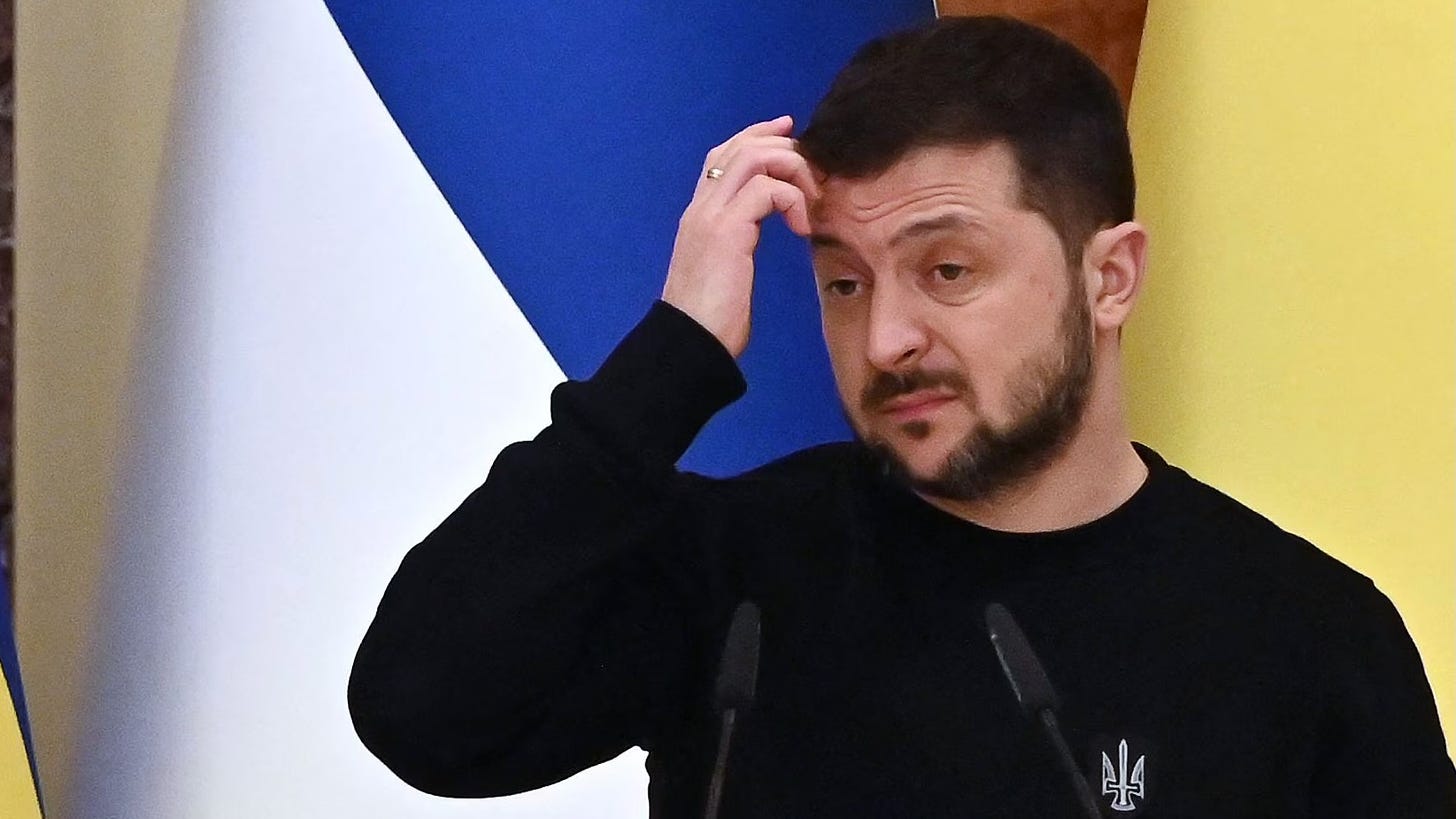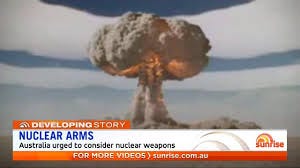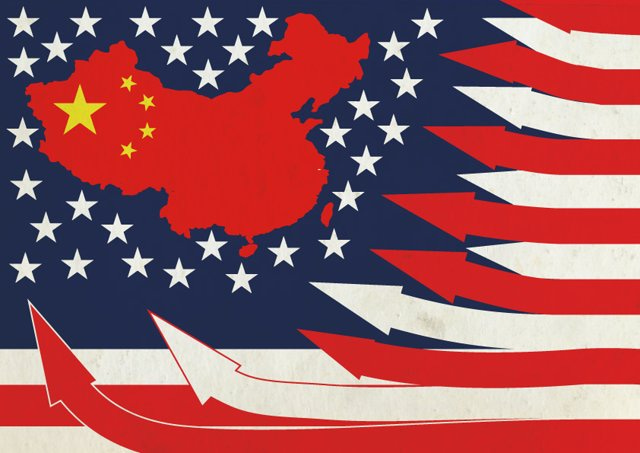Europe not Pacific
China-US trade; US in over its head, TSMC; Ukraine no Ammo, Zelensky pleads; whatever it takes-as long as it takes; NATO munitions; Aussies nuke ambiguity; US's dark reflection; ASEAN CoC push SCS
UPDATE: The Long Mekong Weekend reloads to shoot its nearly 10,000 readers a two-front view of military escalation. The Ukraine is running out of ‘Western’ ammunition and two years from now the NATO members will have re-industrialised munitions production. That is how long it takes, but right now the NATO Ukraine proxy has lost the initiative against Russia and Munich has not pulled the proverbial white rabbit from the hat yet.
China’s top diplomat Wang Yi is in Munich talking truce and negotiated peace settlement, but even with the backing of the entire Global South the US and its allies are only “considering” talks and continue promoting their proxy war for “as long as it takes”. Meanwhile, in ASEAN the proposed Code of Conduct for the South China Sea is gaining traction in the face of US client Australia talking “nuclear ambiguity,” which is certain to only further increase tensions and the deployment of more US bases. Problem is that the production of armaments is insufficient to actually create any stockpiles on the Pacific islands and the Philippines. Not to worry, the shifting of Taiwan’s semiconductor capacity from the island to the US mainland is proceeding slowly and TSMC chairman Morris Chang says the US is in over its head.
First-up, a quick update on China-US trade relations from Dr. Digby James Wren on Bloomberg TV.
TSMC Chief: The US “Is in Over Its Head”
Morris Chang the power behind Taiwan’s TSMC - the manufacturer of the world’s most advanced semiconductors - has questioned whether the United States is a suitable environment for semiconductor manufacturing, pointing to gaps in the workforce and defects in the business culture. Chang’s TSMC ‘s overwhelming importance in the high-tech supply chain has become a global vital strategic asset. If China were to unify successfully, the impact would convulse the international economy. Thus, the wealthy north is stripping Taiwan of its industrial capacity veiled by blandishments about self-determination.
“Fifty billion dollars – well, that’s a good start,” quipped the 91-year-old Morris Chang, warning that Washington’s new bipartisan industrial policy may not add up.
But Pelosi said she had also delivered a firm message of her own: “That we knew what we were doing, that we were determined to succeed with it – that it was a good start.”
On a podcast hosted by the Brookings Institution last year, Chang lamented what he called a lack of “manufacturing talents” in the United States, owing to generations of ambitious Americans flocking to finance and internet companies instead. Other Taiwanese executives have also voiced hesitation. The US government has rejected Chang’s concerns about the current U.S. workforce, but point to American tech hubs like Silicon Valley and North Carolina’s Research Triangle as evidence that the US knows how to build dynamic, fully staffed tech hubs and can build more of them.
“I don’t really think it’s a bad thing for the United States, actually,” he said, “but it’s a bad thing for trying to do semiconductor manufacturing in the U.S.”
Chang visited Arizona to join President Biden at a construction site in north Phoenix where TSMC is building a complex. His company mapped out plans for an Arizona project before Biden became president, but after the passage of the CHIPS law TSMC announced it would massively increase its investment in the state from US$12 billion to US$40 billion and also build a second facility.
The new Arizona fabrication center is expected to supply Apple and other American tech companies, is probably eligible for U.S. subsidies and will employ thousands of workers in a major electoral battleground. Biden said it was more than just a good start, the United States was “better positioned than any other nation to lead the world economy in the years ahead — if we keep our focus.”
The US governments CHIPS implementation is supposed to unlock a torrent of private-sector investment and make American semiconductor fabrication a sturdy, long-range enterprise. Just who is supposed to purchase the exports of billions of semiconductors US Officials have not said. China is the world’s largest importer and is rapidly closing the manufacturing gap to complete a 100% China based semiconductor supply-chain.
Compiled from reports.
Ukraine is out of ammo
As the NATO Ukraine proxy war against Russia stretches into its second year, NATO has run out of ammunition. Dwindling munitions supplies has become a central problem for the 54 members of the Ukraine Defense Contact Group as they struggle to fund and supply ammunition to the Ukraine proxy’s losing battle against Russia.
The US Scranton Army Ammunition Plant churns out roughly 11,000 artillery shells a month; the Ukraine military fires that many shells in a few days. The Scranton plant is undergoing a massive expansion, fuelled by billions of dollars in new defense spending from the Pentagon. The US and its allies have already sent nearly US$50 billion in aid and equipment to Ukraine’s military over the past year. To keep that up, and to rebuild its own stockpiles, the Pentagon is racing to re-arm, embarking on the biggest increase in ammunition production in decades, and putting portions of the US defense industry on a war-footing despite America technically not being at war.
The Pentagon has allocated roughly US$3 billion to buy munitions from allies and to ramp up production at Scranton and produce the artillery staple – 155 millimetre shells. The US army is planning a 500% production increase, from 15,000 a month to 70,000, at the Scranton plant. Other US, munitions factories are also increasing production. Lockheed Martin, recently sanctioned by China for supplying Taiwan with arms, has augmented production of rockets and missiles, including those used by the US Patriot missile system. The US army is establishing a new plant in Garland, Texas to make artillery shells, while an existing plant is being expanded in Middletown, Iowa that loads, packs and assembles 155 millimetre shells.
The US army intends to double the production of Javelin anti-tank missiles, make roughly 33% more Guided Multiple Launch Rocket Systems (GMLRS) surface-to-surface medium-range missiles a year, and produce each month a minimum of 60 Stinger anti-aircraft missiles – which were “almost not in production at all” Stinger and Javelin missiles are some of the most critical and relied-upon munitions by Ukraine and they have told the US they need 500 each day.
The announced removal of NATO Secretary General Jens Stoltenberg is directly tied to losses in the proxy campaign and the fact that the “current rate of Ukraine’s ammunition expenditure is many times higher than our [NATO] current rate of production”. As Ukraine prepares for a much-anticipated spring offensive in the coming weeks, the US is still years away from reaching its expected level of increased weapons production.
“The war hinges heavily on defense industrial production […] but the question is, were they made too late to affect what could be the decisive phases of the conflict this year" […] For Ukraine, the challenges are more immediate and medium term, while much of the added US production capacity appears to be two years in the future” (Michael Kofman, Center for Naval Analyses).
In addition to supplying its Ukraine proxy, the US is selling arms to its allies and trying to rebuild its own stockpiles, which are seriously depleted. A recent report warns that America’s assistance to Ukraine has “depleted US stocks of some types of weapon systems and munitions, and that in a Pacific conflict, the US would run out of “key long range munitions,” like long-range anti-ship missiles, in “less than a week of the war.” While the new Philippine bases grab headlines, the US strategy in the Pacific relies on having weapon systems pre-positioned in key locations and the US does not have any weapons to base in the Philippines, Australia or Japan.
Read more here.
Whatever it takes - as long as it takes?
NATO officials publicly promise they will do “whatever it takes” for “as long as it takes” to support their Ukraine proxy in the war against Russia. A new article explores the conditions under which NATO and other leaders declare fulfilment of their slogans. 27 instances of the expressions “whatever it takes” for “as long as it takes” have been documented, however, only a few were accompanied by specifics.
Former Italian Prime Minister Mario Draghi, vowed the following less than 24 hours before Russian President Vladimir Putin formally announced Russia’s invasion of Ukraine on Feb. 24, 2022: “We have our allies at our side ... together we will do whatever it takes to preserve Ukraine's sovereignty, Europe's security and the integrity of the international order based on the rules and values we all share.”
Importantly, U.S. President Joe Biden was also among the few to define the goal behind the vague phrasing. When asked by a reporter to clarify what G-7 leaders meant when they vowed on June 27, 2022, to provide support for Ukraine for “as long as it takes”.
“We are going to stick with Ukraine and all of the Alliance is going to stick with Ukraine as long as it takes to, in fact, make sure that they are not defeated ... by Russia. And so, I don’t know what—how it’s going to end, but it will not end with a Russian defeat of Ukraine in Ukraine.” (Biden, 2022)
In contrast to Draghi and Biden, however, the majority of those promising “whatever it takes” and “as long as it takes” failed to clarify what exactly their perseverance is intended to accomplish. That vagueness could arguably make their resolve look less convincing in the eyes of not only the warring parties, but also their allies. After all, a pledge to exert maximum effort vis-a-vis someone doesn’t sound particularly convincing unless one specifies what exactly one is trying to achieve.
Read more here.
Zelensky pleads for ammo in Munich
Allies have delivered an array of weaponry to Ukraine since the outbreak of the war and promise more, but Kyiv fears crucial supplies will arrive too late to defeat a major new offensives.
"We need to hurry up […] We need speed -- speed of our agreements, speed of our delivery... speed of decisions to limit Russian potential" (Zelensky, 2023)
The meeting is being attended by the leaders of France and Germany, US Vice President Kamala Harris, China's top diplomat Wang Yi, US Secretary of State Antony Blinken and outgoing NATO chief Jens Stoltenberg. Russian delegates have not been invited.
French President Emmanuel Macron urged allies to "intensify our support" for Ukraine to aid its forces in launching a counter-offensive, saying France was ready for a "prolonged conflict" and now was not the right time for dialogue with Moscow. Chancellor Olaf Scholz meanwhile insisted that German support was "designed to last", but took a veiled swipe at other allies over faltering efforts to deliver promised tanks to Ukraine. It is a reversal of fortunes for Scholz, who has faced accusations of foot-dragging over his reluctance to permit delivery of the tanks. Under German law, Berlin must give permission for other countries that use the tanks to re-export them.
Compiled from reports
Willing servant: Australia’s acceptance of US nuclear ambiguity
The AUKUS alliance is increasingly adopting a nuclear tone. First came the promise to furnish Australia with nuclear powered submarines, absent nuclear weapons, a point that did not dissuade critics such as Indonesia. Then came the announcement to deploy six B-52 bombers to the Northern Territory’s Tindal airbase, south of Darwin, an exercise underwritten by the Pentagon.
In being turned into a US military outstation in the Pacific, the question as to whether Australia will host (or has hosted) nuclear weapons, a serious one indeed. Are such arrangements ongoing, and what, in fact, constitutes hosting for the purpose of US-Australian relations and Canberra’s compliance with international obligations? Any such arrangement is bound to make a nonsense of the South Pacific Nuclear-free Zone Treaty, otherwise known as the Treaty of Rarotonga, to which Australia is a party.
The Albanese government is doing little to clarify the matter, and, in so doing, drawing even more attention to itself. Much of this is to do with the fable of extended deterrence, a belief of little substance, that maintains that Australian security can only be assured by the US nuclear umbrella. The Greens have pressed for clarification on the issue of nuclear weapons on Australian soil. Senator David Shoebridge asked whether Canberra was complying with the Treaty of Rarotonga, and whether visiting B-52s could carry nuclear weapons. The only issue is the type of nuclear enabled weapon B-52s might carry including nuclear-tipped cruise missiles.
“It is clear [that the] stationing of [US controlled] nuclear weapons in Australia is prohibited by the South pacific nuclear free zone treaty, to which Australia is fully committed.” (Greg Moriarty, Department of Defence)
However, there was no clarification about “foreign aircraft [using] Australian airfields or transiting Australia’s airspace” including Australian force posture cooperation with the United States for training and exercise programs. Moriarty acknowledged that the practice of carrying nuclear weapons on US aircraft was entirely consistent with Australia’s own commitments to both the Treaty of Rarotonga and the Nuclear Non-Proliferation Treaty.
“US bomber aircraft have been visiting Australia since the early 1980s and have conducted training in Australia since 2005. Successive Australian governments have understood and respected the longstanding US policy of neither confirming nor denying the presence of nuclear weapons on particular platforms.”
Shoebridge, responded with the question: am I to “ understand from that answer that defence does not believe that there is a restraint under Australia’s current treaty obligations [permitting] nuclear armed B-52 bombers to be present in Australia, provided it’s not a permanent presence?”
Australia’s foreign minister Penny Wong deferred the issue in its entirety to Washington’s judgment, accepting the principle of “warhead ambiguity”.
“It is part of ensuring we maintain that interoperability […] We have tried to be helpful in indicating our commitment to the South Pacific nuclear free zone treaty. We are fully committed to that […] the responsible way […] is to recognise that the US has a ‘neither confirm nor deny position’ which [Australia] understand and respect.”
This stubbornly irresponsible approach by the Australian government and its public servants means that the Australian public, at no point, can know whether US aircraft or delivery systems will have nuclear weapons, even if they transit through airspace or are based, for however long, on Australian soil. Australians have resisted the nuclearisation of the military for decades and now the Albanese government is letting the Americans do it for us. This inglorious subservient status to Washington means an increasingly likely prospect of being targeted in any future conflict that involves the United States. Hardly a responsible state of affairs, and one on the verge of being treasonous.
Read more here.
The US sees China through the dark mirror of its own unbridled aggression
As China grows and prospers many in the US want us to believe that China will follow the same path that the US itself pursued- global military aggression, the overthrow of numerous governments around the world and persecution of minorities at home.
But the record so far suggests that China is different.
As former US senior diplomat Chas Freeman in Brown Political Review of 14 March, 2022 put it, China does not have a Monroe Doctrine like the US and does not think and behave like the US.
There’s not much evidence of China wanting to replace us. They are displacing us in some spheres because they’re big and growing and successful. Do they want to take on our global dominion and hegemony role? No, but we assert that they do. We posit that China thinks and behaves like us: “We had Manifest Destiny and it took us across the Pacific to the Philippines. Therefore, China must have a Monroe Doctrine and Manifest Destiny in mind.” This is wrong. Things don’t work like that. So I would argue that we have inhaled our own propaganda, and we are living in the appropriately stoned state that that produces. If we have sound policies, we can out-compete anyone. But we’re not looking at sound policies; we’re looking at pulling down our competitor.
Read full article here.
Is the sun setting on US power in the South China Sea?
Southeast Asian foreign ministers vowed to finalize negotiations with China over a proposed pact aimed at preventing conflicts in the disputed South China Sea in their annual retreat on Saturday in Indonesia’s capital. In the final session of their two-day meeting, the ministers from the Association of Southeast Asian Nations also agreed to unite in their approach to implement a five-step agreement made in 2021 between ASEAN leaders and Myanmar’s military leader, Senior Gen. Min Aung Hlaing, that seeks to end that country’s worsening crisis.
China and the ASEAN member states, which include four rival claimants to territories in the South China Sea, have been holding sporadic talks for years on a “code of conduct,” a set of regional norms and rules aimed at preventing a clash the disputed waters. Indonesian Foreign Minister Retno Marsudi said that Indonesia, this year’s ASEAN chair, is ready to host more rounds of negotiations over the proposed pact, the first of which will be held in March. She said ASEAN members are committed to concluding the discussions “as soon as possible.”
“Members are also committed to promote implementation of a declaration of conduct,” Marsudi added.
Marsudi did not elaborate, but in the past, China has accused Washington of meddling in what it calls an Asian dispute. The U.S. has deployed ships and jets to patrol the waters to promote freedom of navigation and overflight.
“All of us agreed that it has to be an effective implementable in accordance with international law, and the code of conduct must fulfill this criteria,” Suryodipuro said. “It’s an exploratory stage. We don’t know what shape it will take, but as you know negotiation is a key process that is something we intend to intensify.”
ASEAN members Cambodia and Laos, both Chinese allies, have opposed the use of strong language against Beijing in the disputes. Indonesia is not among the governments challenging China’s claim to virtually the entire South China Sea but expressed opposition after China claimed part of Indonesia’s exclusive economic zone in the northern region of the Natuna Islands.
Read full article here.




